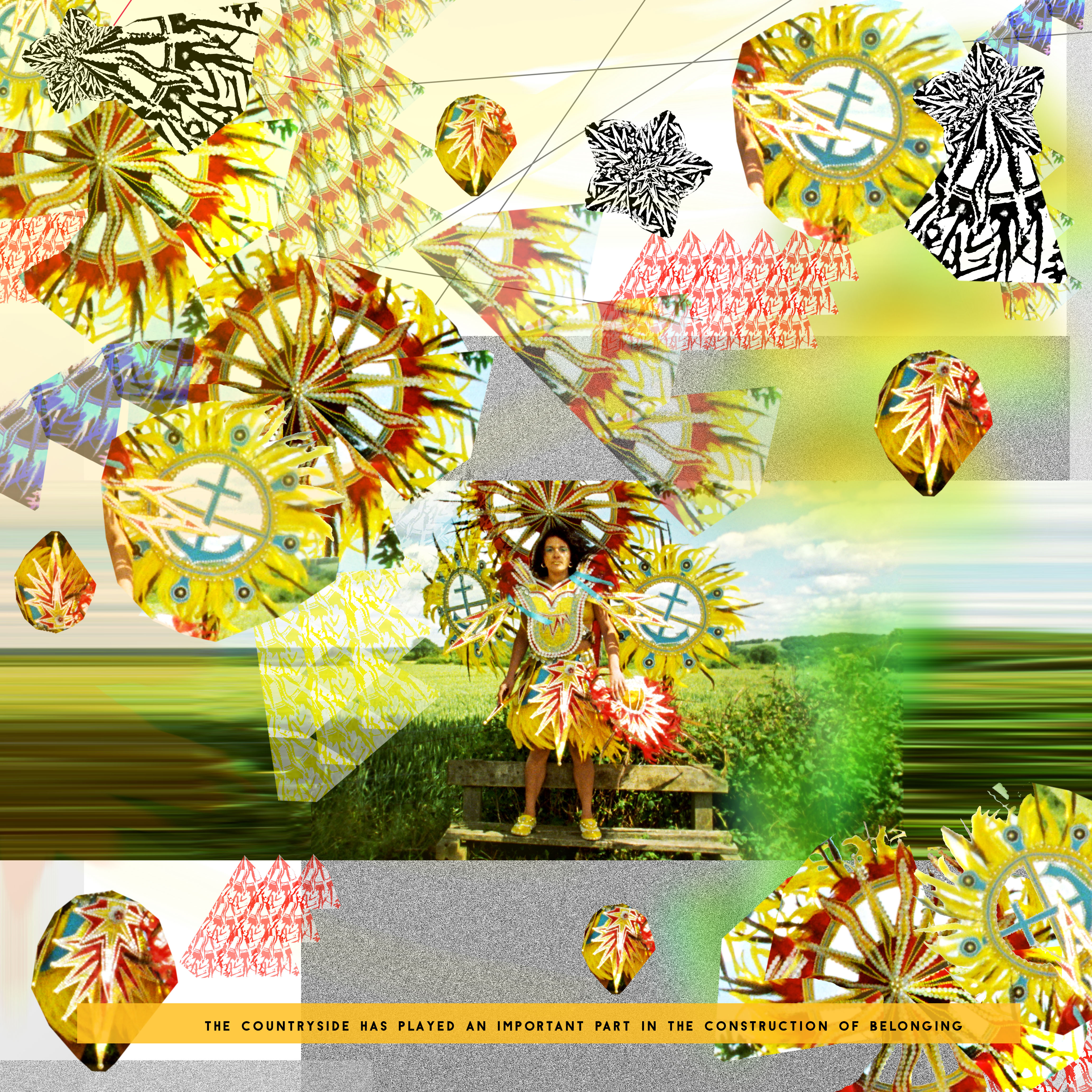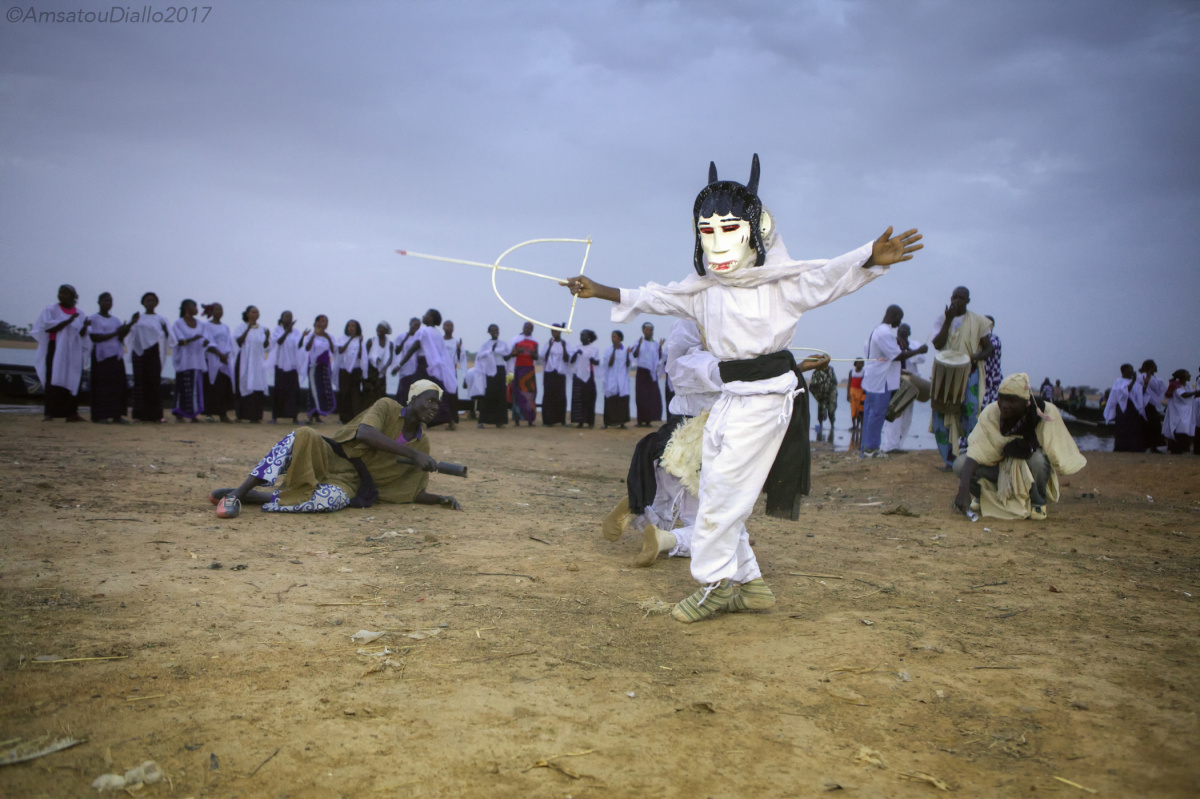
The Racialized Gaze on Landscapes
In most films, the English countryside is hailed as an idyllic place. Yet its colonial history is often overlooked. In her essay inspired by the film A Protest, A Celebration, A Mixed Message, on West Indian carnival in Leeds, Chandra Frank investigates how the countryside produces Otherness – and why debates about removing colonial monuments are essential in creating new images of belonging.
→ Check all articles of this special
→ Download PDF with introduction and table of contents
The English countryside is often presented as a timeless idyllic place. Rolling hills, quaint pubs, traditional cottages, and cream teas. Within the public and cinematic imaginary, we come upon the countryside as untouched, picturesque, and safely protected from supposedly volatile city life. These spaces are not just racialized as white but have become synonymous with white national English identity. The countryside has long played an important part in the construction of belonging and nationhood.
During British imperialism, these rural landscapes were hailed as the epitome of civilization. They tell us an important story about processes of othering and spectrality. The nostalgia for the countryside as unspoiled territory of course does not take into account how the rural landscape is imbrued in coloniality. Many stately homes, as shown in series such as Downtown Abbey, were bought or maintained with, or benefitted from, the wealth generated through slavery and colonialism. According to a recent report by the National Trust, after the abolishment of slavery, owners of at least 29 of these properties received compensation for the loss of enslaved people.
Black British photographer Ingrid Pollard’s series Pastoral Interlude (1988) points to the lingering visual remnants of the English involvement in the Atlantic slave trade in the Lake District. Here, the countryside is territorial and frequently contrasted against the supposed threats of city life. Pollard’s interventions made it clear who is un/seen within the British countryside. Who becomes the spectator here? What is the role of land in spectatorship?

Becoming Spectral
Landscapes are not only haunted because of their violent past, but rather because haunting creates a durational relationship. Rhea Storr’s short film A Protest, A Celebration, A Mixed Message explores Leeds West Indian carnival as a site of spectatorship, where Black people and the celebrations become «a spectacle for a white majority». The film speaks to the racialized gaze and how carnival becomes a site for the consumption of otherness.
Any kind of documentation of landscapes becomes spectral in itself. Meaning that the countryside «speaks»: The haunting of land, houses, visual remnants, place names is not just a faint memory of ghosts of the past, but rather forces us to rethink their role in the present. Evidently, the countryside is also not exclusively white. There are Black and South Asian families who have long lived in these parts of the country. While their experiences cannot be generalized, the workings of anti-blackness and anti-migrant sentiments are woven into the fabric of the countryside and produce a state of hypersurveillance.
The Imaginary of Belonging
What does this tell us about how the countryside produces Otherness? Contemporary Black and Brown artists have called for a reconsideration of the relationship to land and nature including how aesthetics of the rural are portrayed. Storr’s film provides a glimpse into the longest-running West Indian carnival taking place in Yorkshire. The sound cultures, costumes, and intersecting ways in which carnival is portrayed as a celebration and protest inevitably become part of the countryside.
Efforts to reexamine colonial histories should be placed in conversation with the ongoing call to remove colonial and imperial monuments. I think here of the 2015 student-led campaigns Rhodes Must Fall and #FeesMustFall in South Africa and more recent actions to remove confederate statues after the ongoing anti-Black police violence in the United States. The white backlash against the removal of these statues, as well as concerns about keeping the countryside white, show how structures of belonging are animated through performance, ritual, and rupture of these statues and spaces. Within contemporary cultural production, rural spaces, and aesthetics will continue to raise critical questions about the imaginary of belonging.
The film «A Protest, A Celebration, A Mixed Message» by Rhea Storr was officially selected at the Norient Film Festival NFF 2021. See full program here.
This text is part of Norient’s essay publication «Nothing Sounds the Way It Looks», published in 2021 as part of the Norient Film Festival 2021.
Bibliographic Record: Rhensius, Philipp. 2021. «Editorial: NFF 2021 Essay Collection.» In Nothing Sounds the Way It Looks, edited by Philipp Rhensius and Lisa Blanning (NFF Essay Collection 2021). Bern: Norient. (Link).
Biography
Published on February 16, 2021
Last updated on April 09, 2024
Topics
A form of attachement beyond categories like home or nation but to people, feelings, or sounds across the globe.
Does one really need the other in order to understand oneself?
How artistis deal with this non-natural but political category as a result of its ideological dominance.
From Beyoncés colonial stagings in mainstream pop to the ethical problems of Western people «documenting» non-Western cultures.
Snap




